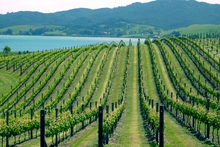Wednesday Nov 28, 2012

New Zealand’s wine sector is showing signs of a profit turnaround but is still not producing financial returns which would be acceptable to investors, according to a survey.
Kiwi wineries have struggled in recent years because of the Global Financial Crisis, supply imbalances, high external debt levels and decreased land and vineyard values.
Vintage 2012, released today by Deloitte and New Zealand Winegrowers, shows the industry is gradually recovering but still faces significant challenges.
All but the smallest wineries – those making $0-$1.25 million in revenue – turned a profit this year with that category recording a loss of 5.5 per cent compared to 2011.
Otherwise, all but the largest New Zealand wineries ($20 million+) increased their year-on-year profit, said Deloitte partner Paul Munro.
“It’s very pleasing to see that the Vintage 2012 survey results continue to support the signs of a turnaround within the industry which began last year,” he said.
“But there is still some way to go to be at a point where the financial returns are appropriate to the capital invested.”
An executive summary in the survey pointed out that only the two largest vineyard categories recorded double digit profitability in 2012 and returns on equity and assets were low.
“The industry is still at a stage where financial returns would not be acceptable to investors, especially over the long term,” it said.
Munro said wineries had historically battled with high levels of external debt but appeared to be tackling that debt in the past few years.
“However, with over 50 per cent of total sales in export markets, the high New Zealand dollar continues to be the number one issue facing the industry according to the survey.”
Head of New Zealand Winegrowers Philip Gregan said a much smaller grape harvest in 2012 bode well for wineries.
An oversupply of wine in the market recently has meant cheap prices for consumers but poorer profitability for growers.
“With wine exports now worth in excess of $1.2 billion per year, strong and growing demand for our branded products and reduced supply from the 2012 vintage, this should provide further opportunity for improvement in winery margins in the year ahead,” Gregan said.
Kumeu River Wines’ Michael Brajkovich agreed that the biggest positive for the industry right now was a drop in this year’s harvest.
“I think there are very positive signs out there, mostly due to the supply side being fixed,” Brajkovich said.
The fact that a few vineyards had pulled out of the market also helped, he said.
This year’s harvest of 269,000 tonnes was down 18 per cent (59,000 tonnes) on the previous year, according toNZ Wine’s 2012 annual report.
But Munro said there were also anecdotal reports that industry nervousness of too little grape supply was leading to new vineyard investments being considered. He issued a warning.
“It is important for the sector to continue to focus on the growth in value, rather than the volume, of sales,” he said.
“Such investments need to be carefully assessed to ensure they are strongly market led and there is no repeat of the supply demand imbalance seen in recent years.”
According to Vintage 2012, the most profitable wineries this year were those in the $10-$20 million revenue bracket, with an average profit of 17 per cent.
The largest wineries, earning more than $20 million in revenue, had average profit of 11.1 per cent, down from 15.3 per cent last year.
Vintage 2012 is Deloitte’s and New Zealand Winegrowers’ seventh annual financial benchmarking survey for the kiwi wine industry.
The number of wineries that responded to this year’s survey (36) amounted to about 28 per cent of the industry by litres of wine produced, and 34 per cent by export sales revenue.
